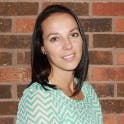Alternative practice settings: Road blocks and detours
By Amy Ericks, RDH, BSDH
I’m feeling pretty good about my progress with this journey. What initially started as a two-year goal ended up taking me approximately seven months. I certainly cannot complain about the timeline, although sometimes I am tempted to. I’d like to spend some time discussing some things that either slowed down my progress or simply tested my patience.
If you have been following my progress (see list of articles) below, you may remember my first step was to approach facilities to determine any level of interest. I was overly encouraged when the first facility that I visited was on board with my proposal without much explanation. I did spend some time visiting all of the nursing facilities in my community, and, with each one, the interest became less and less. With each facility, the list of questions grew and grew—some I could answer, and many I could not. Many questions were the type that any dentist that I consider approaching would likely ask as well.
---------------------------------------------
Other articles by Amy Ericks
- Alternative practice settings: Drafting paperwork
- Alternative practice settings: Why I got liability insurance
- Alternative practice settings: Providing exams in a nursing home
- Just ask: Gathering supplies for a dental hygiene cause
- Patiently waiting: Education with the kids while transitioning in dental hygiene career
- The logistics of alternative practice settings: Finding a collaborative dentist
- The logistics of alternative practice settings: Nursing homes
- Pursuing collaborative practice 'out of the goodness of your heart'
- ‘I hope to end up in a nursing home’: Dental hygiene career alternatives
---------------------------------------------
This initial effort provided me with enough hope that it could be successful to continue. On the other hand, I would look at the list of questions and spend countless hours trying to determine the best answer for them. While this felt like wasted time when I could be in a facility actually providing services, all things have fallen into place as they needed.
At this time, I didn’t have a dentist on board, so I couldn’t progress anyway. I eventually felt like I had compiled answers to the majority of the questions, and those questions without answers would be obtained with experience.
Face to face with a dentist
Back on track with answers, paperwork, and determination, it was time to find a dentist. I updated my resume, wrote a cover letter detailing my professional goals, and requested an opportunity to discuss my ideas, and sent them off in the mail.
This turned out to be a big waste of time! After about a week, I called all of the offices and inquired about setting up a time to discuss this with the dentist. What I got typically was the brush-off that they weren’t looking for a hygienist at the moment, but would keep my information on file. I wouldn’t be surprised if a single letter didn’t pass the front desk. Oh, well, next move. I printed off more resumes and cover letters, dressed up, and headed out to the offices themselves.
Again, much to my surprise, the first office that I walked into was a success. Many questions were asked. I didn’t have answers to some of the questions, but I did for the rest of them. Some days, I am not sure if I came across as being confident or desperate for help. At this point, I guess I don’t care. Either way, I have a dentist who will join me.
The aggravation of incomplete paperwork
Next step is, you guessed it, more paperwork. This time for the state board of dentistry. This paperwork outlines the collaborative agreement, who is involved, what location, and what services will be provided. The paperwork didn’t take very long to put together. But it had to be submitted to the board approximately one month prior to their board meetings.
So there was some stress in making sure my information arrived in on time. The biggest hiccup at this time was providing proof of hours. Currently, my state requires a minimum number of clinical hours and a certain number of those hours to be completed within the past two to three years. I tried to be proactive, and roughly figured my hours each year of employment and had my previous employer sign it for verification.
The board preferred to have a specific form filled out with that information. I delivered the form to my previous employer, and provided an explanation of why the board needed this form to be signed instead, as well as a request to drop the postage paid envelope in the mail. I wanted it to be easy.
I called the board after about a week to see if the paperwork I sent had arrived, and if the hours verification was received as well. Yes, my paperwork was there—a sigh of relief! Yes, the hours verification form was sent in as well, but it was not completed and signed. This is where I briefly became disheartened. The board, however, agreed with me that I cannot control what someone else does, and they decided to use the information I had compiled myself. Thank goodness!
Paperwork for“our”patient
Once all of the paperwork was in, it was just a waiting game. I could sit back and relax, or continue to plan so that we can start seeing patients right away. The facility decided that they wanted to wait until the board authorized my application. So it felt like things were at a standstill. I spent that time contacting product companies and local business requesting donations and compiling my equipment.
I previously talked about the timeline between the boards approval to completing exams, approximately 2 1/2 months. During that time, we borrowed a business contract from a sister facility across the state and adjusted it to fit our situation and those involved. Tammy, my teammate at the nursing home, was busy getting the interest up and paperwork in. As she passes on paperwork to me, I called previous dentists to inquire about any recent dental visits for these patients. My main questions were how long ago they were last in, type of hygiene at that time, and if they had any current radiographs we could review.
Some office were extremely helpful, on board with my goals for these patients and more than willing to provide me any information that I needed. Some offices wanted records releases, which I understand, except this is not a transferring of the patient to another office. Instead, I view this as a continuation of care and compare it to a patient being referred out to a specialist. The patient does not have to sign a release of the office to be able to send the information to the specialist. I don’t think this situation is any different.
Nonetheless, this, too, was a road block of sorts. For some of those patients, I was unable to obtain that information.
I press on and do the best I can. Some days, these efforts felt harder than I wanted to commit to. But rather than letting these small issues become a dead end for my efforts, I chose instead to make them into detours. Move around them, and move on.


